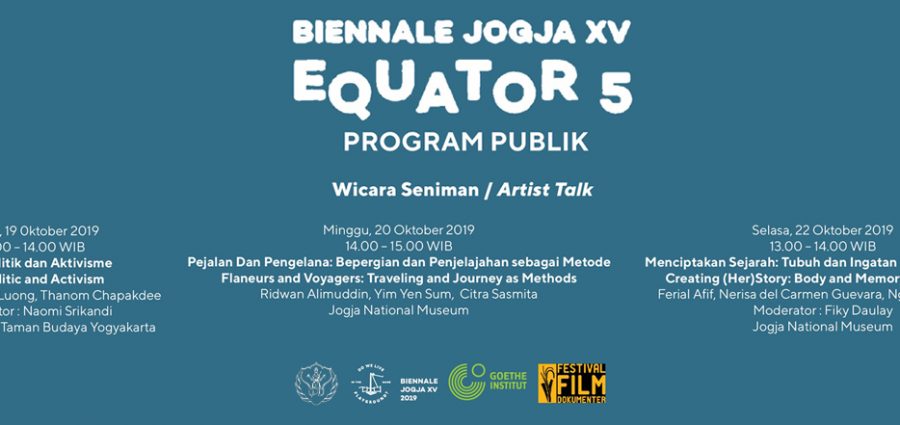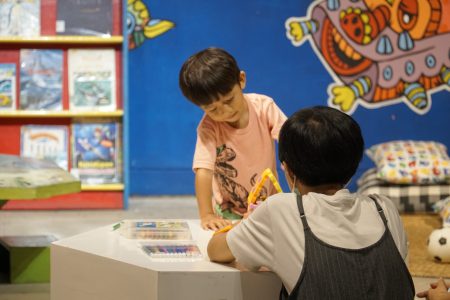

Moelyono, Thanom Chapakdee and Tran Luong are three artists of the same generation. Their works are closely related to the political contexts in their respective countries, in which period when they begin working on, the issues of censorship and state control are crucial. These three artists challenged the risk of fighting for freedom of thought and creation, opening hidden narratives. To them, art is a political way to amplify muted voices. How do they struggle to find their political paths? How do art and activism work in the context of changing regimes and art systems? This discussion will dismantle the practices and ideas of partiality of the three artists, guided by Naomi Srikandi, who also shares her recent experiences in art and activism.
This discussion highlights how travel narratives become a part of the creation process. In the context of Kelana residency, being a walker for a month, artists find various ways to unravel the complexity of historical narratives, as well as dismantle established concepts about the modern world.
In this context, experience becomes a way of producing knowledge, while travel and encounters become a methodology of artistic work. In this presentation the artists presented various narratives: land politics, hidden history, identity politics, social conflicts, and so on. Rather than showing this presentation as an art exhibition, artists are more oriented towards sharing observations together, to be placed in a collective context. How can the findings of this trip be juxtaposed with their previous practices using different cultural contexts? How do artists build narrative collages from different locations?
Nerissa Del Carmen Guevara, Ferial Affif and Nguyen Trinh Thi based much of their works on how linking the body and the memory can build new history, which mainly derives from the perspective of women. To create her work at the 2019 Jogja Biennale, Ferial traveled across East Sumatra to find narratives about female heroes who are not included in the mainstream discourse. Meanwhile, Thinh Tri’s work also departs from the historical imagination of the Panduraga community. Both trace the memories of ordinary people as collective oral history. In addition, Nerisa Del Carmen Guevara uses the body as a medium to rewrite marginalised historical narratives. How does the recording of the body and the memories become a method of art creation?





